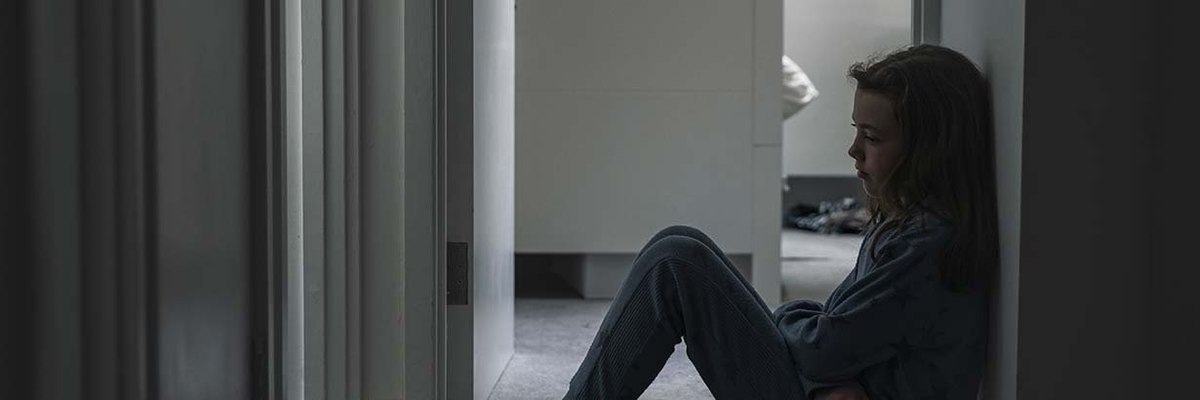One of the marks of a great poet is to state a great truth in a way that will resonate with the reader and may well stay with them for ever. Wordsworth did that for me when he wrote: “Bliss was it in that dawn to be alive but to be young was very heaven.” But, a couple of centuries on, that “great truth” is looking fragile at best. Wishful thinking at worst. If we are to believe the findings of the latest research, being young can be more curse than blessing. And that is something that should worry all of us, however young or old we might be. That’s assuming, of course, that we believe it. Should we? Do you?
Let’s look first at some hard facts. Financial facts. The most obvious is the cost of housing. When I was 22 I bought my first house. It cost £3,000. I was earning a thousand a year and my bank manager was happy to lend me three times my salary. I was on the housing ladder and never looked back. Today, according to the Office for National Statistics, the average home in England costs more than eight times the average income of a typical full-time worker.
The effect of that is obvious. Only about one fifth of people aged between 25 and 34 own their own homes. Compare that with those over the age of 60. It’s about two thirds and the vast majority of them have paid off their mortgages.
When I interviewed a group of young people (members of the so-called Generation Z) for the Daily Telegraph recently about how they viewed the future their overwhelming worry was the cost of housing. They were all bright, ambitious university graduates but not one of them could even imagine a future in which they were able to raise enough money to buy even a modest flat. It was an impossible dream.
You might say they were being unduly pessimistic. Surely they’ll get there in the end and so long as they are prepared to work hard they’ll earn a decent income in a decent job and financial security will follow. In which case, fair enough. Let’s hope you’re right.
But there was another report published this week that suggests maybe that’s being overly optimistic. And the reason for that is that a frighteningly large proportion of them don’t have a job to go to. Or perhaps they are not working because of the state of their health. It’s calculated that about 2.8 million people are out of work because of long-term sickness. To be more specific: their mental health.
I said “frighteningly large” because of the comparison with how it was at the turn of the century. A generation ago it was far more likely to be people in their forties who were too sick to work. Twice as many as people in their early twenties. In other words there has been a complete reversal. And this has little if anything to do with their physical ability and everything to do with what we have come to describe as mental health issues.
At this point many older readers may reflect that “mental health” was a phrase used only very rarely when they were young. There was, of course, mental illness. There always have been. Terrible diseases such as schizophrenia and bipolar disease. Serious depression destroyed far too many lives. But now, if the latest figures from the National Health Service are to be taken at face value, the picture is very different.
They show that more than 420,000 children are being treated in England for mental health conditions. That is the highest number that has ever been recorded. One in six young people are said to be suffering from what is described as a “probable” mental health disorder. Three quarters of those cases emerge before the age of 24. The most common of them are related to depression and anxiety.
The obvious question at this point can be summed up in one word. Why? And one obvious answer can be summed up in two words: social media.
Children are now subjected to the sort of pressures that simply did not apply to their parents. They are judged by their peers endlessly for everything from their physical appearance to their dress sense, their ability to engage in witty repartee and their knowledge of whatever happens to be the subject of the moment. They are judged even more harshly if they choose not to engage. Ignoring the world of social media is simply not an option for any child or teenager. They could, in theory, lock themselves in their bedrooms and switch off their phones and tablets. They might be able to find safe spaces. But there is no safe space in school. And anyway, isolation is itself a serious threat to the wellbeing of even the most robust teenager.
At the extreme end of this phenomenon are those websites that tempt children – especially girls – that offer “easy” solutions to their crises. This is where they fall prey to those truly vile peddlers of self-harm and even suicide.
Even the more benign offerings on social media can give vulnerable youngsters reason to doubt themselves. The boasting of their more academically successful contemporaries with their Oxbridge admissions or the minority who have landed the job they’ve always yearned for or even the few whose wealthy parents make it possible for them to move into a rather nice little flat.
Never before have young people had so many opportunities to compare themselves with their equals and find themselves lacking. One of the easiest ways to deal with their self-perceived shortcomings can be simply to opt out of what they see as a rat race. Or blame it on your “mental health issues”. Young people are constantly reminded that they inhabit a hyper-competitive world in which things once taken for granted, such as a decent salary or affordable home, may forever be beyond them. This adds to a sense of powerlessness, which feeds anxiety and depression.
There is clear evidence that mental health problems are more likely in young people who have done poorly in school for whatever reason. Some blame the national syllabus and the rigidity of an exam system in which only those with a specific set of academic skills can succeed. Other qualities - practical skills, a genuine enthusiasm to learn, count for nothing. Yet many – if not most – employers prize them highly.
As The Times puts it, Britain’s record in turning non-academic talents to good use in the economy is lamentable: “Students forced to endure lessons at 16 might flower if allowed to learn a skill in a work setting. And those who hate the classroom may yet return to learning later in life if a re-energised further education sector is there waiting for them. The Organisation for Economic Co-operation and Development says that British children often rate among its unhappiest.
Here’s how Kathryn Ecclestone, who was professor of education at Sheffield University, puts it: “From primary school they have been made aware of their mental health, encouraged to seek help for stress and anxiety, and taught ‘resilience building’ and a vocabulary of emotional wellbeing. Five-year-olds are given plasticine or worry beads as soon as they feel ‘uncomfortable’. Schools and universities offer therapy pets, mindfulness sessions, emotional wellbeing weeks, and train students as “mental health ambassadors”. The list is endless.”
It is no surprise, she says, that serious problems overwhelm some young people to the point of disability… A growing number of children and young people actively seek a therapeutic diagnosis; some 15-year-olds press their parents to allow anti-depressants because their peers have them. Others have learnt to use mental health difficulties to gain an advantage; some define everyday apprehension as full-scale ‘panic attacks’, and others ask potential employers how many ‘mental health days’ they are allowed.”
So perhaps what all this comes down to is our old friend or, if you prefer, our relatively new enemy: the “snowflake” culture which dictates that we must, whatever it costs, make learning less “stressful”. Indeed, we must make life less stressful. And if a young person complains about feeling under too much pressure or feeling a bit miserable we should not automatically reach for the “mental health” diagnosis.
Or perhaps we should smile sympathetically and say: that’s life. And then do what we can to help.
Let us know what you think.








